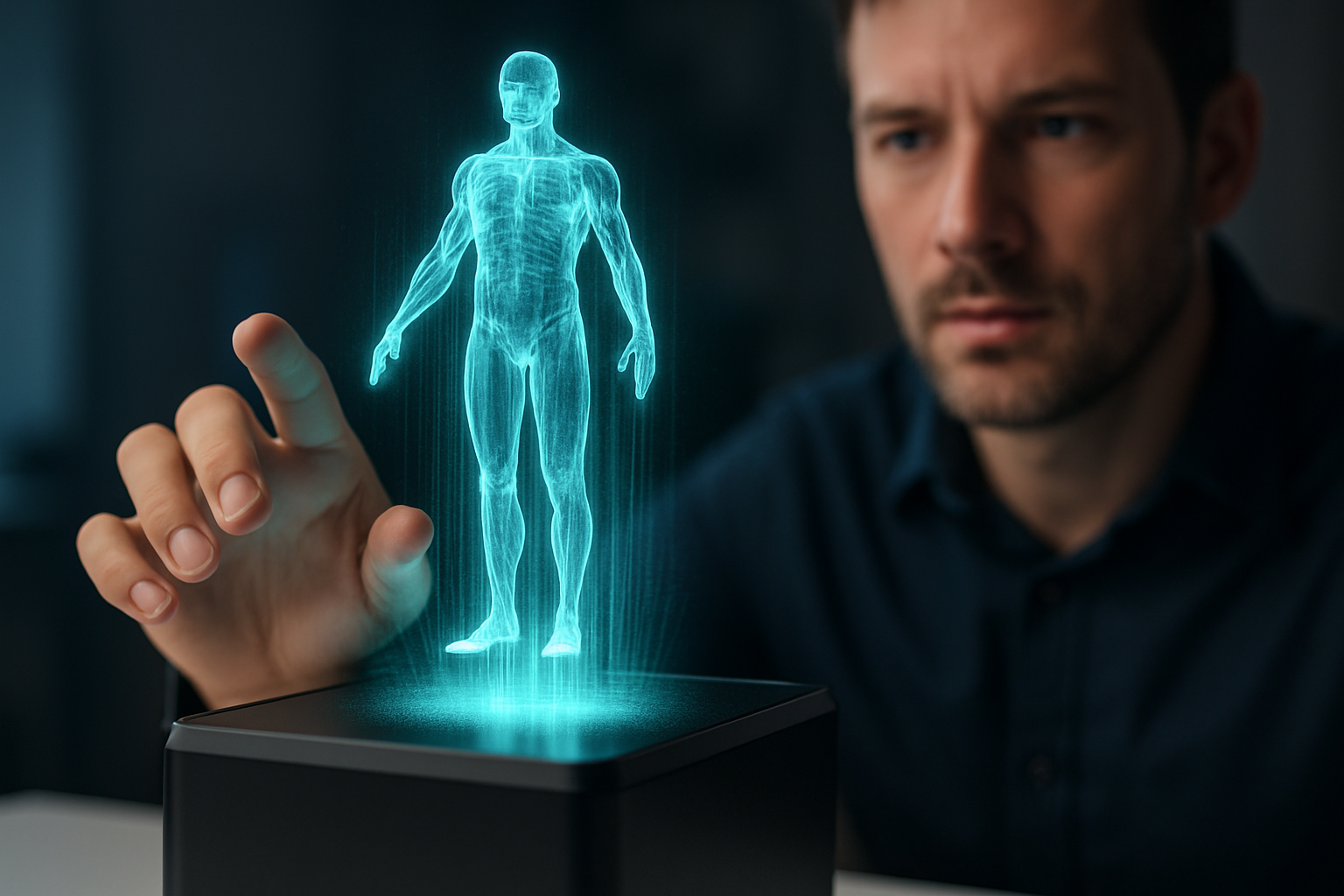Holographic Haptics: Touch the Virtual
In a world where digital experiences reign supreme, the quest for more immersive and tangible interactions with virtual environments has led to a groundbreaking innovation: holographic haptics. This cutting-edge technology promises to revolutionize how we interact with digital content, allowing users to not only see but also feel and manipulate holographic projections in mid-air. As the lines between physical and virtual continue to blur, holographic haptics stands at the forefront of a new era in human-computer interaction.

How It Works: The Science Behind the Magic
At its core, holographic haptics relies on two key components: a holographic display system and an array of ultrasonic transducers. The display projects a 3D image into the air, while the transducers emit high-frequency sound waves that converge at specific points in space. When these sound waves intersect, they create areas of high and low pressure, which can be felt as tactile sensations on human skin.
Beyond Visual: The Tactile Dimension
What sets holographic haptics apart is its ability to add a tactile dimension to virtual objects. Users can reach out and feel the contours of a holographic shape, experience different textures, and even manipulate virtual objects as if they were physical. This level of interaction goes beyond traditional touchscreens or motion controls, offering a more intuitive and natural way to engage with digital content.
Applications Across Industries
The potential applications for holographic haptics span a wide range of industries. In healthcare, surgeons could practice complex procedures on holographic patients, feeling the resistance of virtual tissues. Automotive designers could sculpt and refine car models in mid-air, feeling every curve and contour. In education, students could interact with historical artifacts or complex molecular structures, gaining a deeper understanding through tactile exploration.
Challenges and Limitations
Despite its promise, holographic haptics faces several challenges. Current systems are limited in the strength and resolution of tactile feedback they can provide. The technology also requires precise calibration and a controlled environment to function optimally. Additionally, the cost of implementing such systems remains high, limiting widespread adoption in the short term.
The Future of Interaction
As research progresses, we can expect to see more sophisticated and accessible holographic haptic systems. Future iterations may incorporate additional sensory feedback, such as temperature and texture variations, further blurring the line between virtual and physical. The integration of AI could lead to more responsive and adaptive holographic environments, tailoring the haptic experience to individual users.
Market Impact and Potential
While still in its early stages, the holographic haptics market is poised for significant growth. Industry analysts predict a substantial increase in investment and development over the next decade. Early adopters in fields like medical training, industrial design, and high-end consumer electronics are likely to drive initial demand, with prices ranging from tens of thousands to hundreds of thousands of dollars for comprehensive systems.
Ethical Considerations
As with any transformative technology, holographic haptics raises important ethical questions. Issues of privacy, data security, and the potential for sensory manipulation must be carefully addressed. There’s also the broader societal impact to consider, as increasingly realistic virtual interactions could affect how we perceive and value physical experiences.
In conclusion, holographic haptics represents a significant leap forward in our ability to interact with digital content. By adding the sense of touch to visual holograms, this technology opens up new possibilities for creativity, learning, and problem-solving across various fields. As we stand on the brink of this tactile revolution, it’s clear that the way we interact with computers and digital information is about to undergo a profound transformation. The future of human-computer interaction is not just visual or auditory—it’s tangible, and it’s floating right before our eyes.





